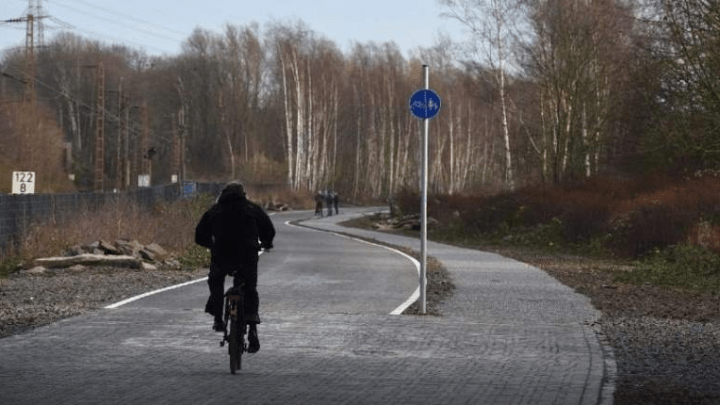
A handful of European countries have generally done better than their American counterparts at transitioning from car traffic to bicycle routes. In Germany, up to 10 percent of daily commuting already takes place on bicycles — and this number would probably be higher if there were safer roadways between the country’s major cities. Within cities and neighborhoods where bicycling is popular, it has been historically difficult to ride a bicycle from one city to the next.
The first five-kilometer stretch of the Bicycle Autobahn (about 3.1 miles) has already opened for cyclists to enjoy, thanks to funding from the European Union, the state of North Rhine-Westphalia, and development group RVR. Developers are working to secure federal funding to finish off the Bicycle Autobahn before too much time passes, since regional governments don’t always have the necessary funding to back such expansive projects.
The proposed impact to the environment is clear, and other cities are on board with the idea. Frankfurt, Munich, London, and other major cities have all proposed their own stretches of bicycle-exclusive roadway to both preserve the environment and ease traffic pains.
When completed, the 100 kilometer (62 mile) Bicycle Autobahn will connect cities like Duisburg, Bochum, and Hamm. With a 13-foot wide bike route, overtaking lanes, overpasses, and underpasses that allow for safe bicycle passage through heavily-trafficked motor vehicle areas, the Bicycle Autobahn is safer and definitely more environmentally friendly than driving to work. Analysts estimate that the completed Bicycle Autobahn will remove as many as 50,000 cars from popular commuter roads every day. The proposed impact to the environment is clear, and other cities are on board with the idea.


